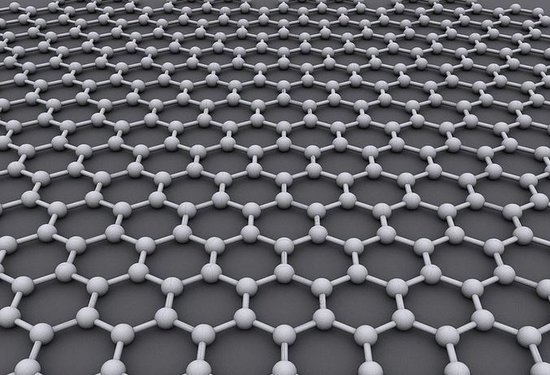A graphene light bulb, which uses 10% less energy and lasts longer than any light bulb currently on the market, will be available in shops later this year, say its UK developers from the National Graphene Institute (NGI) at The University of Manchester, England.
The dimmable bulb, which was designed at the University of Manchester, has a filament-shaped LED coated in graphene, the strongest material known to science – about 200 times stronger than steel.
Graphene is so thin that it is considered to be a 2-dimensional object.

The graphene bulb uses less energy, will be cheaper to buy, and has a longer life than current energy-saving bulbs, says the National Graphene Institute. (Image: University of Manchester)
Graphene, consisting of a single layer of pure carbons arranged in a hexagonal lattice pattern, was discovered at the University of Manchester in 2004 by two Russian-born scientists Konstantin Novoselov and Andre Geim. They both earned the Nobel Prize for Physics and knighthoods.
The bulb was developed by Graphene Lighting, a Canadian-financed company. Professor Colin Bailey, deputy vice-chancellor at the University of Manchester, is also a director at Graphene Lighting.
The makers say the new graphene light bulbs will be cheaper than the current LED bulbs, which retail at around £15 each.
Excellent conductor of electricity and heat
The developers say the graphene in the light bulb conducts electricity and heat more effectively, making it a superior product to anything else available when it comes on the market.

Graphene, a single layer of pure carbons arranged in a hexagonal lattice pattern, is 200 times stronger than steel. It is the thinnest and lightest material in the world. Scientists say it is a 2-dimensional object. (Image: Wikipedia)
In an interview with the BBC, Prof. Bailey said:
“The graphene light bulb will use less energy. We expect it to last longer. The manufacturing costs are lower and it uses more and more sustainable components.”
National Graphene Institute
On March 20th, the Chancellor George Osborne officially opened the £61 million National Graphene Institute (NGI) at The University of Manchester. He toured its state-of-the-art cleanrooms and laboratories with Prof. Sir Kostya Novoselov.

Chancellor George Osborne and Prof. Sir Konstantin Novoselov (left) with the graphene bulb. (Image: University of Manchester)
The NGI, the UK’s national centre for graphene research, will enable industry and academics to work together on the graphene applications of tomorrow.
Over thirty-five companies from across the globe have already expressed interest in partnering with the University of Manchester on graphene projects.
The UK government provided £38 million for the construction of the NGI via the EPSRC (Engineering and Physical Sciences Research Council), with the ERDF (European Regional Development Fund) funding the remaining £23 million.
Mr. Osborne said:
“Backing science and innovation is a key part of building a Northern Powerhouse. The new National Graphene Institute at The University of Manchester will bring together leading academics, scientists and business leaders to help develop the applications of tomorrow, putting the UK in pole position to lead the world in graphene technology.”
The 7,825 square metre, five-storey facility features cutting-edge equipment throughout to create the world’s leading graphene research hub.
Graphene has huge potential
NGI scientists say the potential uses for one-atom thick graphene are enormous, and expect vast potential for products in electronics. Researchers say that thanks to graphene, semi-transparent, flexible electronics may no longer be just science fiction.
According to the University, the NGI’s 1,500 square metres of clean room space is the biggest academic space of its kind globally for dedicated graphene research.
Professor Dame Nancy Rothwell, President and Vice-Chancellor of The University of Manchester said:
“The National Graphene Institute will be the world’s leading centre of graphene research and commercialisation.”
“It will be the home of graphene scientists and engineers from across The University of Manchester working in collaboration with colleagues from many other universities and from some of the world’s leading companies.”
“This state-of-the-art institute is an incredible asset, not only to this University and to Manchester but also to the UK. The National Graphene Institute is fundamental to continuing the world-class graphene research which was started in Manchester.”
